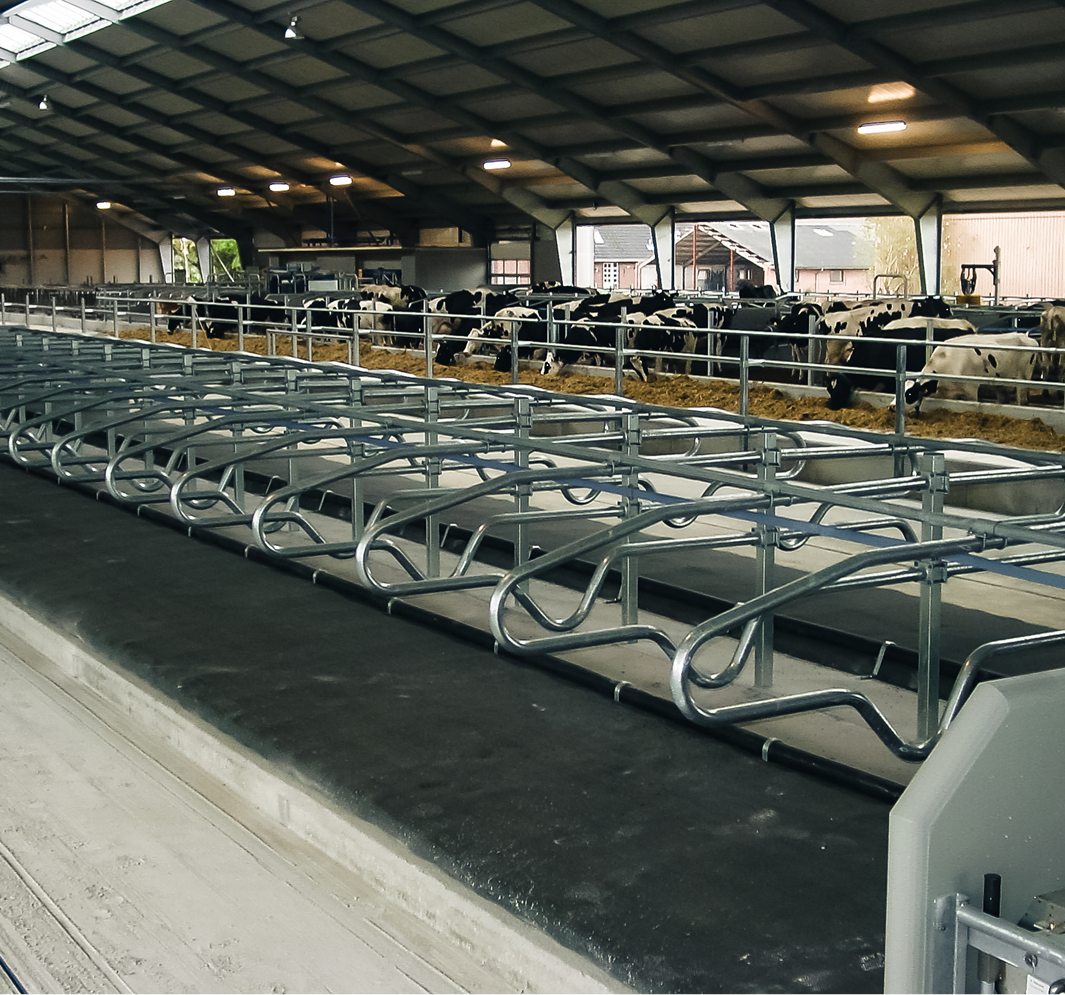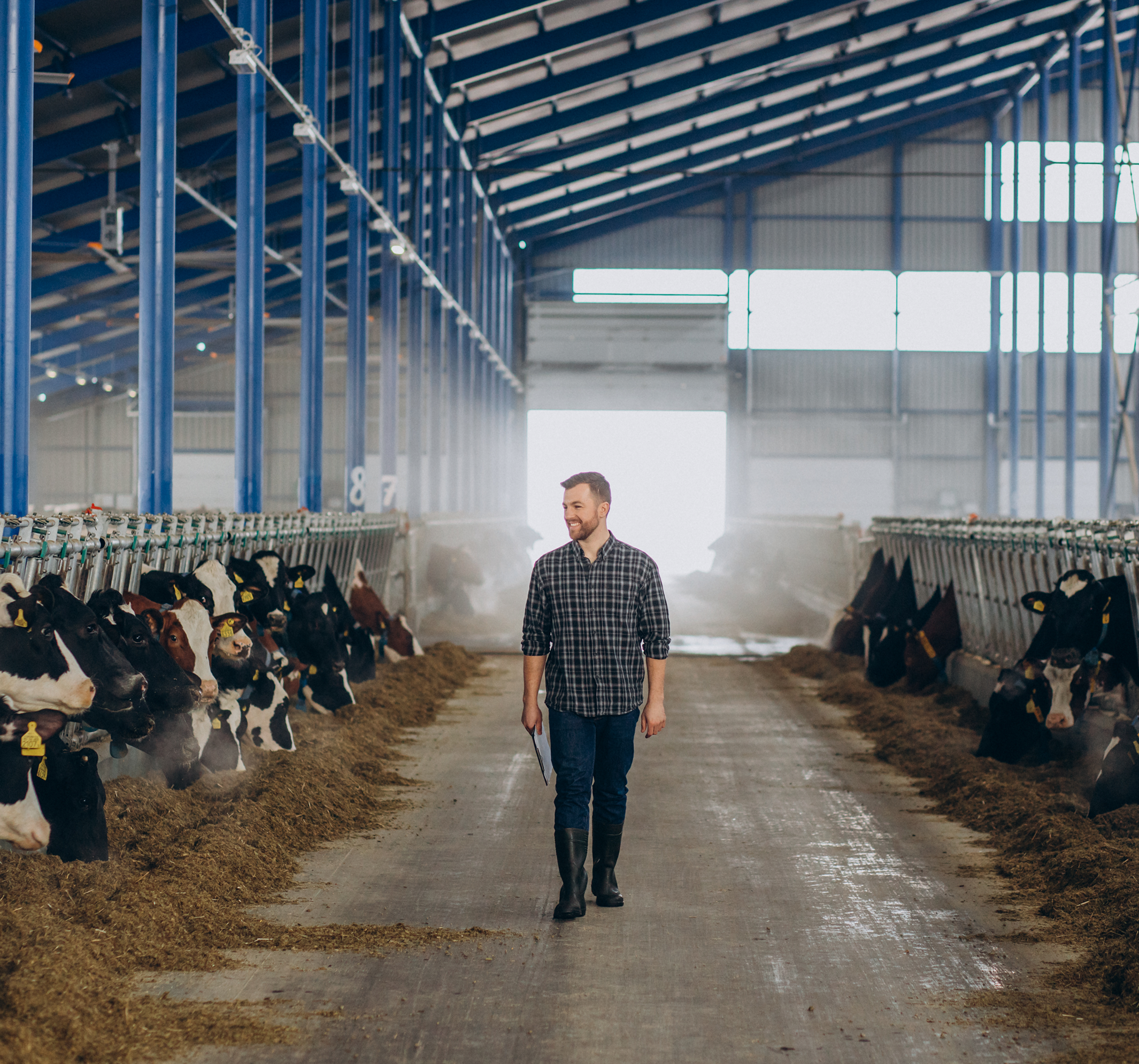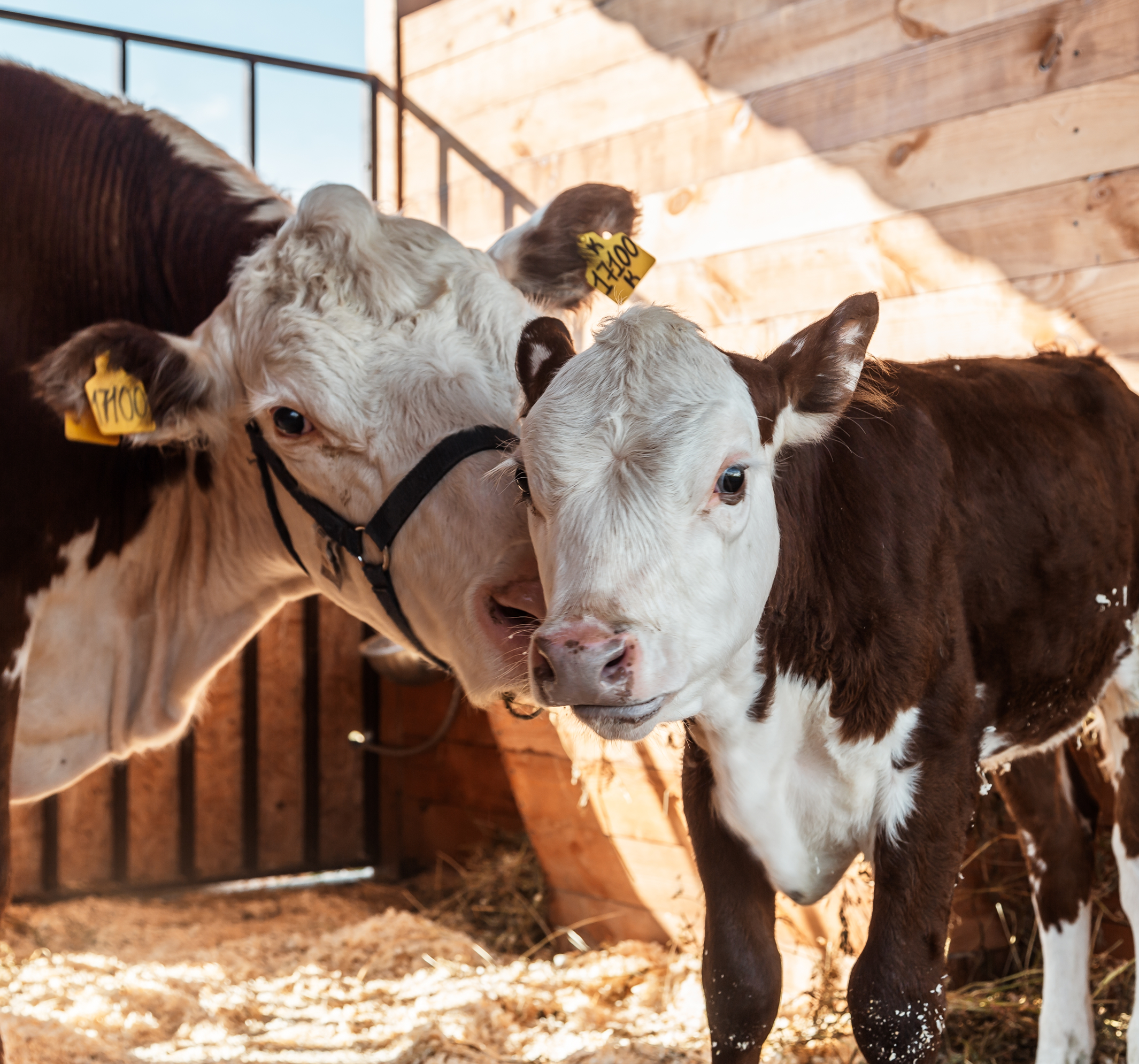Improving comfort for healthier,
more productive dairy herds
Uncomfortable stalls affect cow health and milk production quality and quantity
Dairy cows spend much of their time lying down. Hard concrete floors or thin bedding can strain their joints, leading to higher rates of lameness and leg injuries. Discomfort also disrupts normal lying and rising patterns, potentially causing stress and reducing feed intake. Over time, stressed cows often yield less milk, and they may develop additional health complications. If bedding is frequently wet or contaminated, cows face an elevated risk of mastitis and other infections.
Uncomfortable stalls affect cow health and milk production quality and quantity
Dairy cows spend much of their time lying down. Hard concrete floors or thin bedding can strain their joints, leading to higher rates of lameness and leg injuries. Discomfort also disrupts normal lying and rising patterns, potentially causing stress and reducing feed intake. Over time, stressed cows often yield less milk, and they may develop additional health complications. If bedding is frequently wet or contaminated, cows face an elevated risk of mastitis and other infections.
Uncomfortable stalls affect cow health and milk production quality and quantity
Dairy cows spend much of their time lying down. Hard concrete floors or thin bedding can strain their joints, leading to higher rates of lameness and leg injuries. Discomfort also disrupts normal lying and rising patterns, potentially causing stress and reducing feed intake. Over time, stressed cows often yield less milk, and they may develop additional health complications. If bedding is frequently wet or contaminated, cows face an elevated risk of mastitis and other infections.
.jpeg)
.jpeg)

.jpeg)
.jpeg)

.jpeg)
.jpeg)


When resting areas do not meet their needs, cows may avoid lying down, and that can compromise blood circulation to the udder – an important factor in milk production. Farmers then must spend more on bedding materials to compensate for the hardness of the floor, leading to higher labor and supply costs. Meanwhile, dirty or moisture-laden stalls can contribute to foul odors and a less sanitary barn environment overall.
Better cow comfort boosts productivity and lowers costs

When cows can lie down comfortably, they experience less stress, conserve more energy, and typically produce more milk. A soft yet supportive surface eases the pressure on their legs and hips, reducing injuries and veterinary bills. Providing a gentle stall area also encourages cows to rest sufficiently, which improves rumination and overall herd health. This, in turn, contributes to a longer productive lifespan for each animal, cutting replacement costs and stabilizing milk output.
By reducing reliance on large amounts of bedding, farmers can save on materials and disposal. A well-designed cow mattress helps keep the stall drier, so cows remain clean, further lowering the risk of udder-related infections. In effect, robust stall comfort can transform the entire barn environment: healthier cows, more efficient bedding usage, and higher milk yields.
Uncomfortable stalls affect cow health and milk production quality and quantity
Dairy cows spend much of their time lying down. Hard concrete floors or thin bedding can strain their joints, leading to higher rates of lameness and leg injuries. Discomfort also disrupts normal lying and rising patterns, potentially causing stress and reducing feed intake. Over time, stressed cows often yield less milk, and they may develop additional health complications. If bedding is frequently wet or contaminated, cows face an elevated risk of mastitis and other infections.
Better cow comfort boosts productivity and lowers costs
When cows can lie down comfortably, they experience less stress, conserve more energy, and typically produce more milk. A soft yet supportive surface eases the pressure on their legs and hips, reducing injuries and veterinary bills. Providing a gentle stall area also encourages cows to rest sufficiently, which improves rumination and overall herd health. This, in turn, contributes to a longer productive lifespan for each animal, cutting replacement costs and stabilizing milk output.
By reducing reliance on large amounts of bedding, farmers can save on materials and disposal. A well-designed cow mattress helps keep the stall drier, so cows remain clean, further lowering the risk of udder-related infections. In effect, robust stall comfort can transform the entire barn environment: healthier cows, more efficient bedding usage, and higher milk yields.

.jpeg)
.jpeg)

.jpeg)
.jpeg)
.jpeg)
.jpeg)
.jpeg)

How NICOLON cow-mattress top layers provide dependable comfort
NICOLON cow-mattress top layers balance cushioning and durability. They protect an underlying layer of foam or rubber from wear and tear, extending the mattress’s lifespan. The surface is designed to be easy to clean, keeping stalls dryer and more hygienic. By preventing deep grooves or tears from forming, NICOLON top layers also help maintain consistent comfort over time – cows can lie down without hitting hard spots.
Their robust construction ensures minimal stretching or sagging even under the weight of large dairy cattle. Because the material resists moisture penetration, stalls stay drier, requiring less frequent bedding changes. This protective surface allows farmers to focus on other aspects of herd management rather than constantly repairing or replacing worn-out stall mats. Over multiple seasons, these top layers deliver a stable, more comfortable resting area that supports healthier, higher-producing cows.




Key benefits
Improved cow comfort
Softer resting surface reduces leg and joint strain
Reduced bedding needs
Less filler material is required for cushioning
Long-lasting durability
Resists tearing, sagging, or moisture damage
Cleaner, drier stalls
Helps maintain better hygiene and prevents bacterial growth
Enhanced milk production
Encourages healthy lying behavior for higher yields
Cost-effective solution
Cuts long-term bedding expenses and vet bills
Resources
Heading 3
Heading 3

Manure storage liners

.png)






